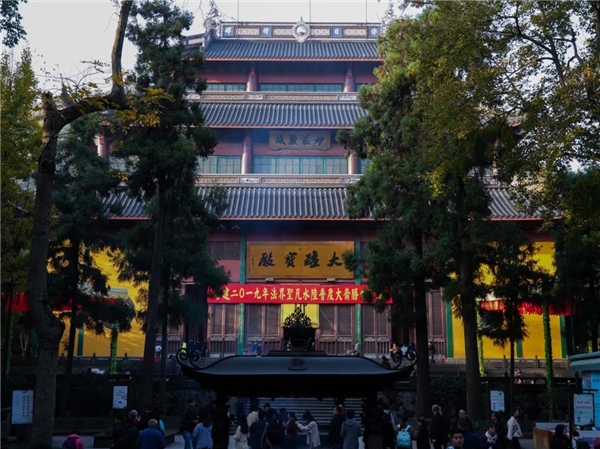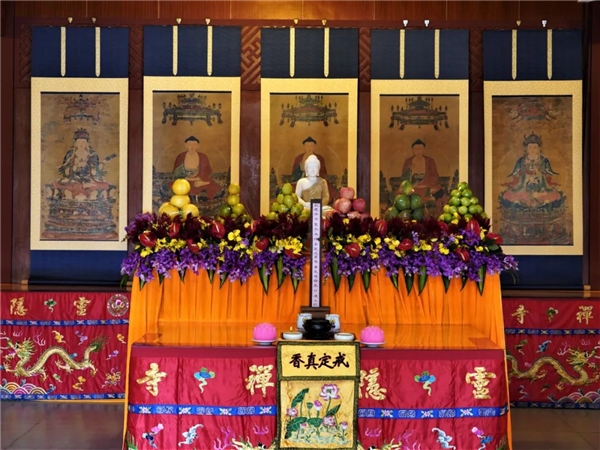
The 2021 Water and Land Liberation Dharma Assembly (pinyin: Shuilu Fahui) is scheduled from October 18 to 24 (from the thirteenth day to the nineteenth day in the ninth lunar month) at Lingyin Temple in Hangzhou. The main goal of the ceremony is to invite beings of higher realms to help the beings in the lower realms get out of their sufferings. With the performance of the ceremony, great merits and blessings will go to the participants, their family and friends, and even all others in the world, so they can gain longevity and free from sufferings. At the ceremony, participants will also pray for favorable weather and good harvest, national prosperity, social harmony and peace of the world.

The Water and Land Dharma Assembly, also commonly known as the Waterland Dharma Rite or Deliverance Service for All in Water and Land, is the grandest and most solemn Dharma assembly in Chinese Buddhism. This repentance ritual finds its origin in Compassion for the Sixth Paths Repentance (pinyin: Liudao Cichan, aka. Emperor Liang Jeweled Repentance (pinyin: Lianghuang Chan)) and also involves various aspects of the Great Assembly without Discrimination (pinyin: Wuzhe Dazhai) in Esoteric Buddhism in the Tang dynasty. The name “Water and Land” (pinyin: Shuilu) was first mentioned by a monk named Zunshi in the Song dynasty as he said that “Saintly beings eat in the water while ghosts eat in the land”, so the ceremony focuses on making offerings for and save sentient beings who live in water and on the land.

The ceremony is attributed to the Emperor Wu of Liang. It is said that the emperor dreamt of a sagely monk who suggested him do something for all the beings in water and on the land. He consulted a monk named Baozhi, who advised him to turn to Buddhist scriptures. The emperor agreed and recruited monks to study the Tripitaka and finally the formation of a ritual guideline for deliverance services was accomplished. In the year 505 (the fourth year of the Tianjian era of the reign of Emperor Wu of Liang), a Water and Land Dharma Assembly was held at Jinshan Temple for confession and deliverance. During the Xianheng era of the Tang dynasty (670-673), Monk Shenying at Fahai Temple got the Water and Land ritual procedure from Monk Yiji at Dajue Temple and then held Dharma assemblies accordingly. Afterwards, the Water and Land Dharma Assembly became a popular Buddhist ritual in the Song, Yuan, Ming and Qing dynasties. In the Late Ming dynasty, Monk Zhuhong revised the Water and Land ritual guideline formulated by Zhipan in the Song dynasty and formulated the six-volume “Water and Land Ritual Procedure”. Based on that, Monk Yirun in the Qing dynasty formulated a new version, which is still commonly used today. Later, Monk Zhiguan in the Qing dynasty recorded “Comprehensive Treatise on the Nature and Characteristics of the Water and Land Great Feast and Ritual Space Benefiting All” (9 volumes) and “Water and Land Great Feast of Precious Repentance of the Dharma Wheel” (10 volumes), monumental Water and Land ritual manuals in the tradition of Zhuhong.

Monk Zhiguan’s works recorded specific instructions for the setting of the altars, the chanting of Buddhist scriptures, the number of the participants, the arrangement of banners and tablets, the ritual procedures etc. The altar space is divided into interior and exterior altars. The primary focus is the interior altar, with offerings of incense and flowers to show utmost respect.